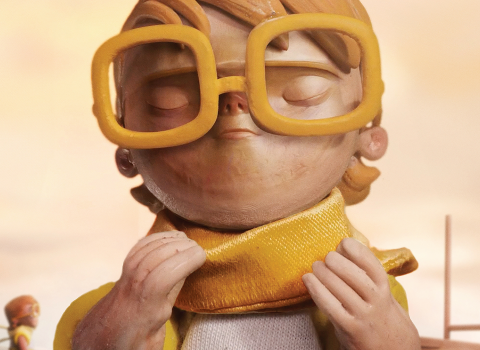I am not a collector. I don’t have shelves full of stamps or coins or vintage Barbie dolls or autographed baseballs. In fact, I have a great deal of trouble finding the things that are on my shelves.
However, I have long known what I would collect if I did collect. And I also know why.
I am endlessly fascinated by chess sets. They are often beautiful, and they are functional – and therefore, they reflect this enthralling business which employs us all. The making of a chess set echoes advertising in its purest terms: it is 50% strategy and 50% execution.
You can create a chess set out of wood, or clay, or marble, or onyx, or cut glass, or poured metal, or paper clips, or Yukon Gold potatoes. You could make the pieces human-sized, as in the town square of Lugano, Switzerland, or you could – and I’m sure it’s been done – make them only visible through a microscope. You can stylize the pieces as if they were medieval courtiers, or the opposing forces at Waterloo, or Trekkers and Klingons. You can even – up to a point – design them in modern abstract.
In other words, as a chess-set maker, your creative potential is just about limitless. But you can fall on your face real easy. If you get carried away with your own creativity, you can easily forget the strategy. And the moment you do, you lose your audience.
A chess player will only care about the beauty of your design until he sits down to play chess. Then the only important thing becomes, which piece is which. And the player who can’t tell your diamond-encrusted rook from your ruby-slippered bishop is going to replace you in a split-second with a nice obvious plastic set from Zellers.
We have a similar infinite arsenal of persuasive materials on our side in advertising. It’s not onyx and marble and teak, it’s sound and motion and music. It’s a whole painter’s palette full of human elements – humour, romance, surprise, oratory, exaggeration, empathy, lateral thinking, reasoned argument. We’ve got the tools to make really great stuff.
But if we get so carried away with our tools that we lose our audience, we’ve got a chess set that wins awards and then sits around useless. And I’m afraid I see this more and more.
I recently put the new Kit Kat campaign in that category. Another Strategy columnist, Pamela Davis, has cited "Ericcson’s recent incomprehensible outdoor campaign." Still another columnist, Barry Base, has a nice metaphor for what seems to be going on. He refers to the kind of creative where they run the chariot race from Ben Hur, slap somebody’s logo on the end, and pretend it’s communication. It may be, but it ain’t a chess set.
The dot-com folks, with all their newly minted billions, are doing a lot of attention-getting ads where you can’t tell the pawns from the knights. Laughs are attached, but not name recognition. In fact, a company called Datek Online is now running a print ad saying, "THE EXECUTION OF YOUR TRADE SHALL BE MORE IMPORTANT THAN MAKING FUNNY COMMERCIALS." A bit wooden, but they have a point.
I stand firmly in the camp of those who believe that entertainment is a good ingredient in advertising – but it can’t be a substitute for making points and hammering home an identity. We should be creating chess sets where the moves are clear – i.e., both feet to cash register and left hand to wallet.
John Burghardt’s checkered resumé includes the presidency of a national agency, several films for the Shah’s government in Iran, collaboration with Jim Henson to create the Cookie Monster, and a Cannes Gold Lion. The letterhead of his thriving business now reads "STRATEGIC PLANNING • CREATIVE THINKING". He can be reached by phone at (416) 693-5072, by fax at (416) 693-5100 or by e-mail at burgwarp@aol.com




























